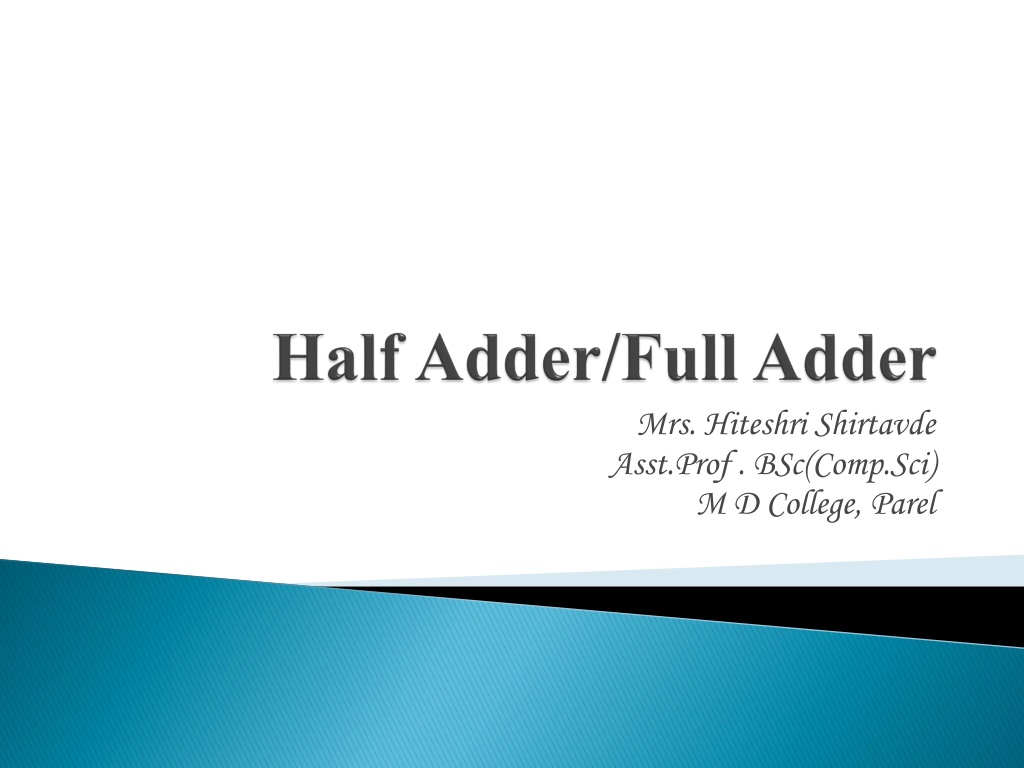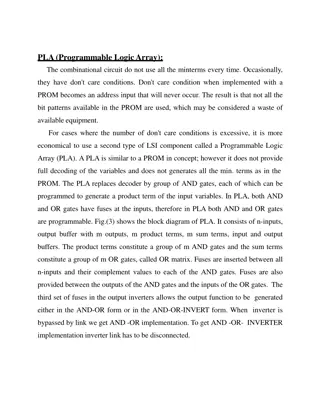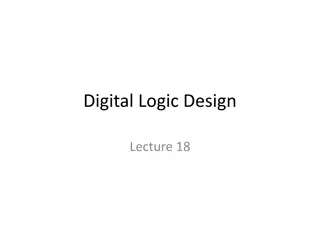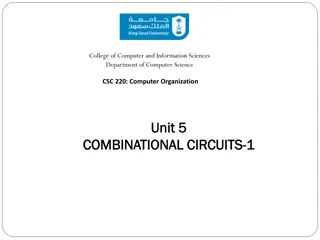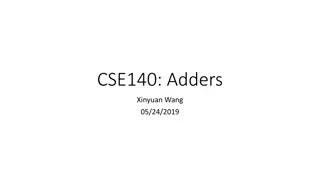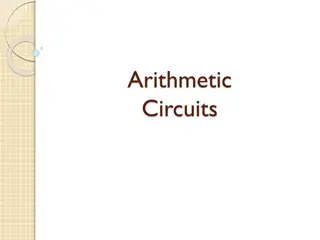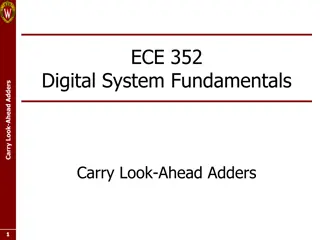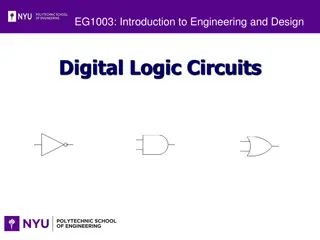Understanding Half Adders and Full Adders in Combinational Logic Circuits
Half adders and full adders are essential components in combinational logic circuits for performing addition operations on binary numbers. While half adders can add two single-bit numbers but do not consider carry bits, full adders can handle three bits with carry input. Understanding the input and output variables of these circuits is crucial for designing complex digital systems.
Download Presentation

Please find below an Image/Link to download the presentation.
The content on the website is provided AS IS for your information and personal use only. It may not be sold, licensed, or shared on other websites without obtaining consent from the author. Download presentation by click this link. If you encounter any issues during the download, it is possible that the publisher has removed the file from their server.
E N D
Presentation Transcript
Mrs. Hiteshri Shirtavde Asst.Prof . BSc(Comp.Sci) M D College, Parel
Half Adder is a combinational logic circuit. It is used for the purpose of adding two single bit numbers. It contains 2 inputs and 2 outputs (sum and carry). A S HA B C
Identify the input and output variables- Input variables = A, B (either 0 or 1) Output variables = S, C where S = Sum and C = Carry
A A 0 0 1 1 B B 0 1 0 1 S S 0 1 1 0 C C 0 0 0 1
Half adders have no scope of adding the carry bit resulting from the addition of previous bits. This is a major drawback of half adders. This is because real time scenarios involve adding the multiple number of bits which can not be accomplished using half adders.
Full Adder is a combinational logic circuit. It is used for the purpose of adding two single bit numbers with a carry. Thus, full adder has the ability to perform the addition of three bits. Full adder contains 3 inputs and 2 outputs (sum and carry) as shown- S A B C FA Cin
Identify the input and output variables- Input variables = A, B, Cin(either 0 or 1) Output variables = S, Coutwhere S = Sum and Cout= Carry
